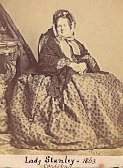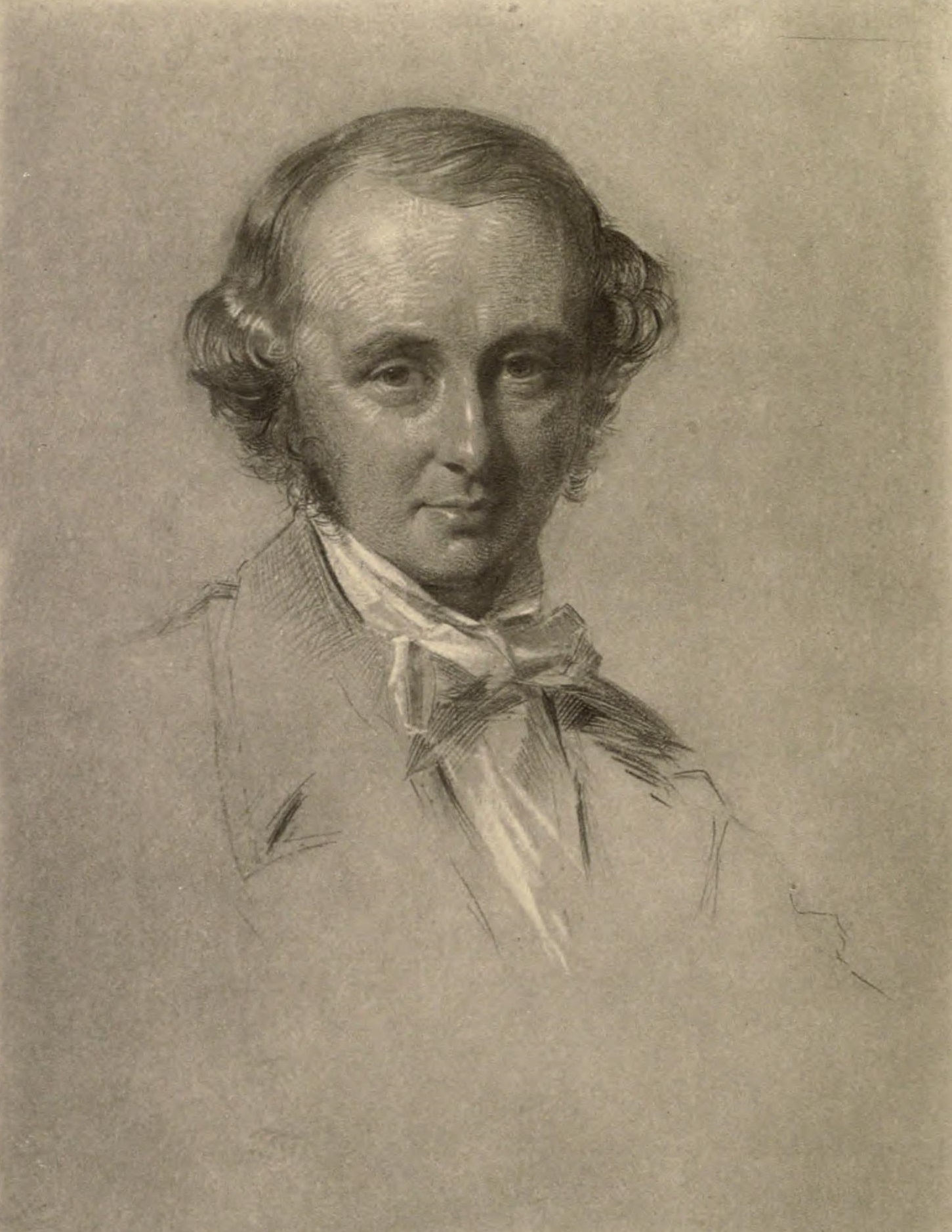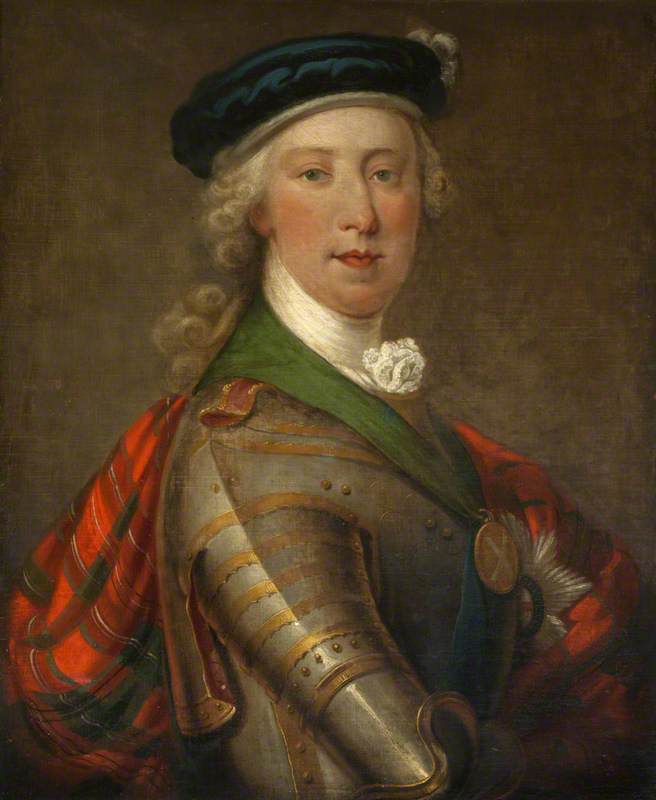|
Henrietta Stanley, Baroness Stanley Of Alderley
Henrietta Maria Stanley, Baroness Stanley of Alderley (née Dillon-Lee; 21 December 1807 – 16 February 1895), was a British Canadian-born political hostess and campaigner for the education of women in England. She was a founder and benefactor of Girton College,Cambridge at the University of Cambridge, but also a signatory of a petition against women's suffrage. She was the grandmother of philosopher Bertrand Russell. Early life and family Born in Halifax, Nova Scotia, Lady Stanley was the eldest child of Henry Dillon, 13th Viscount Dillon, and Henrietta Browne, the sister of Dominick Browne, 1st Baron Oranmore and Browne. She was a descendant of both Charles II (by his mistress Barbara Villiers) and James II of England (by his mistress Catherine Sedley). Her ancestors were Roman Catholic and had had pronounced Jacobite leanings; one of them was ''Maréchal de camp'' Arthur Dillon, a supporter of the Old Pretender who lived in exile in France. Her grandfather Ch ... [...More Info...] [...Related Items...] OR: [Wikipedia] [Google] [Baidu] |
The Right Honourable
''The Right Honourable'' ( abbreviation: ''Rt Hon.'' or variations) is an honorific style traditionally applied to certain persons and collective bodies in the United Kingdom, the former British Empire and the Commonwealth of Nations. The term is predominantly used today as a style associated with the holding of certain senior public offices in the United Kingdom, Canada, New Zealand, and to a lesser extent, Australia. ''Right'' in this context is an adverb meaning 'very' or 'fully'. Grammatically, ''The Right Honourable'' is an adjectival phrase which gives information about a person. As such, it is not considered correct to apply it in direct address, nor to use it on its own as a title in place of a name; but rather it is used in the third person along with a name or noun to be modified. ''Right'' may be abbreviated to ''Rt'', and ''Honourable'' to ''Hon.'', or both. ''The'' is sometimes dropped in written abbreviated form, but is always pronounced. Countries with common or ... [...More Info...] [...Related Items...] OR: [Wikipedia] [Google] [Baidu] |
James Francis Edward Stuart
James Francis Edward Stuart (10 June 16881 January 1766), nicknamed the Old Pretender by Whigs, was the son of King James II and VII of England, Scotland and Ireland, and his second wife, Mary of Modena. He was Prince of Wales from July 1688 until, just months after his birth, his Catholic father was deposed and exiled in the Glorious Revolution of 1688. James II's Protestant elder daughter (the prince's half-sister) Mary II and her husband (the prince's cousin) William III became co-monarchs. The Bill of Rights 1689 and Act of Settlement 1701 excluded Catholics such as James from the English and British thrones. James Francis Edward was raised in Continental Europe and known as the Chevalier de St. George. After his father's death in 1701, he claimed the English, Scottish and Irish crowns as James III of England and Ireland and James VIII of Scotland, with the support of his Jacobite followers and Louis XIV of France, a cousin of his father. Fourteen years late ... [...More Info...] [...Related Items...] OR: [Wikipedia] [Google] [Baidu] |
Benjamin Jowett
Benjamin Jowett (, modern variant ; 15 April 1817 – 1 October 1893) was an English tutor and administrative reformer in the University of Oxford, a theologian, an Anglican cleric, and a translator of Plato and Thucydides. He was Master of Balliol College, Oxford. Early life Jowett was born in Camberwell, London, the third of nine children. His father was a furrier originally from a Yorkshire family that, for three generations, had been supporters of the Evangelical movement in the Church of England, and an author of a metrical translation of the Old Testament Psalms. His mother, Isabella Langhorne (1790–1869), was related to John Langhorne, the poet and translator of Plutarch. At the age of 12, Jowett was placed on the foundation of St Paul's School (then in St Paul's Churchyard) where he soon gained a reputation as a precocious classical scholar. Aged 18 he was awarded an open scholarship to Balliol College, Oxford, where he remained for the rest of his life. He began ... [...More Info...] [...Related Items...] OR: [Wikipedia] [Google] [Baidu] |
Thomas Carlyle
Thomas Carlyle (4 December 17955 February 1881) was a Scottish essayist, historian and philosopher. A leading writer of the Victorian era, he exerted a profound influence on 19th-century art, literature and philosophy. Born in Ecclefechan, Dumfriesshire, Carlyle attended the University of Edinburgh where he excelled in mathematics, inventing the Carlyle circle. After finishing the arts course, he prepared to become a minister in the Burgher Church while working as a schoolmaster. He quit these and several other endeavours before settling on literature, writing for the ''Edinburgh Encyclopædia'' and working as a translator. He found initial success as a disseminator of German literature, then little-known to English readers, through his translations, his ''Life of'' ''Friedrich Schiller'' (1825), and his review essays for various journals. His first major work was a novel entitled ''Sartor Resartus'' (1833–34). After relocating to London, he became famous with his ''French Rev ... [...More Info...] [...Related Items...] OR: [Wikipedia] [Google] [Baidu] |
Henrietta Maria Lady Stanley Of Alderley
Henrietta may refer to: * Henrietta (given name), a feminine given name, derived from the male name Henry Places * Henrietta Island in the Arctic Ocean * Henrietta, Mauritius * Henrietta, Tasmania, a locality in Australia United States * Henrietta, Missouri * Henrietta, Johnson County, Missouri * Henrietta, New York * Henrietta, Ohio * Henrietta, Pennsylvania * Henrietta, Texas * Henrietta, West Virginia * Henrietta, Wisconsin, a county subdivision ** Henrietta (ghost town), Wisconsin, a ghost town * Henrietta Township: ** Henrietta Township, Michigan ** Henrietta Township, Hubbard County, Minnesota ** Henrietta Township, Lorain County, Ohio ** Henrietta Township, LaMoure County, North Dakota Fictional characters * Henrietta de Tristain a fictional character from the Japanese light novel/anime ''Zero no Tsukaima'' * Henrietta the coach, a fictional character of ''The Railway Series'' * Henrietta (Gunslinger), a fictional character from the Japanese manga/anime ''Gunslinger ... [...More Info...] [...Related Items...] OR: [Wikipedia] [Google] [Baidu] |
Maria Stanley, Baroness Stanley Of Alderley
Maria Stanley, Baroness Stanley of Alderley (born Lady Maria Josepha Holroyd; 1771–1863) was a Great Britain, British letter writer and liberal advocate. Life Stanley was born in 1771 to Abigail (née Way) and John Baker Holroyd, 1st Earl of Sheffield, John Baker Holroyd (later) 1st Earl of Sheffield. They lived at an estate called Sheffield Park Garden, Sheffield Park in Sussex that her father had bought after inheriting a fortune from his uncle. Her father, a politician, became an Earl in 1781. In 1783 he was awarded another title in the Irish peerage with a special remainder that it could be inherited by his daughters. Her father's only son (at the time) had died aged five. She was precocious and she and her sister, Louise, would write and perform plays. The theme of many of these plays was a question; whether a daughter would be allowed to choose her own husband or whether it would be imposed by her parents. When she was twelve her intelligence attracted the interest of Edwar ... [...More Info...] [...Related Items...] OR: [Wikipedia] [Google] [Baidu] |
Baron Stanley Of Alderley
Baron Stanley of Alderley, in the County of Chester, is a title in the Peerage of the United Kingdom. It was created in 1839 for the politician and landowner Sir John Stanley, 7th Baronet. Upon his death in 1850, he was succeeded as 2nd Baron Stanley of Alderley and 8th Baronet of Alderley Hall by his son Edward, who was a prominent Liberal politician and notably served as President of the Board of Trade, Postmaster General and had in 1848 been created Baron Eddisbury, of Winnington in the County Palatine of Chester, in his own right. His wife Henrietta was a prominent campaigner for women's education. After his death, the Stanley of Alderley and Eddisbury baronies remained united; most holders have since chosen to be known as ''Lord Stanley of Alderley''. The 3rd Baron Stanley of Alderley had a career in the Diplomatic Service; as he was childless he was succeeded by his younger brother, the 4th Baron. He was liberal member of parliament for Oldham. In 1909, the 4th Baron Stan ... [...More Info...] [...Related Items...] OR: [Wikipedia] [Google] [Baidu] |
Italian Unity
The unification of Italy ( it, Unità d'Italia ), also known as the ''Risorgimento'' (, ; ), was the 19th-century political and social movement that resulted in the consolidation of different states of the Italian Peninsula into a single state in 1861, the Kingdom of Italy. Inspired by the rebellions in the 1820s and 1830s against the outcome of the Congress of Vienna, the unification process was precipitated by the Revolutions of 1848, and reached completion in 1871 after the Capture of Rome and its designation as the capital of the Kingdom of Italy. Some of the states that had been targeted for unification ('' terre irredente'') did not join the Kingdom of Italy until 1918 after Italy defeated Austria-Hungary in the First World War. For this reason, historians sometimes describe the unification period as continuing past 1871, including activities during the late 19th century and the First World War (1915–1918), and reaching completion only with the Armistice of Villa G ... [...More Info...] [...Related Items...] OR: [Wikipedia] [Google] [Baidu] |
Charles Edward Stuart
Charles Edward Louis John Sylvester Maria Casimir Stuart (20 December 1720 – 30 January 1788) was the elder son of James Francis Edward Stuart, grandson of James II and VII, and the Stuart claimant to the thrones of England, Scotland and Ireland from 1766 as Charles III. During his lifetime, he was also known as "the Young Pretender" and "the Young Chevalier"; in popular memory, he is known as Bonnie Prince Charlie. Born in Rome to the exiled Stuart court, he spent much of his early and later life in Italy. In 1744, he travelled to France to take part in a planned invasion to restore the Stuart monarchy under his father. When the French fleet was partly wrecked by storms, Charles resolved to proceed to Scotland following discussion with leading Jacobites. This resulted in Charles landing by ship on the west coast of Scotland, leading to the Jacobite rising of 1745. The Jacobite forces under Charles initially achieved several victories in the field, including the Battle of ... [...More Info...] [...Related Items...] OR: [Wikipedia] [Google] [Baidu] |
Princess Louise Of Stolberg-Gedern
Princess Louise Maximiliane Caroline Emanuel of Stolberg-Gedern (20 September 1752 – 29 January 1824) was the wife of Charles Edward Stuart, the Jacobite claimant to the English and Scottish thrones. The unhappy marriage led her to request from the pope a decree of separation, which she was granted. During her years in Paris and Florence, she established famous salons where important artists and intellectuals of the day were invited to gather. She is commonly called the Countess of Albany. Early life Louise was born in Mons, Hainaut, in the Austrian Netherlands (now Belgium). She was the eldest daughter of Prince Gustav Adolf of Stolberg-Gedern and his wife, Princess Elisabeth of Hornes, the younger daughter of Maximilian, Prince of Hornes. She had three sisters. When she was only four years old, her father was killed at the Battle of Leuthen. His death left the family in much reduced financial circumstances. When she was seven, she was sent to be educated at the school a ... [...More Info...] [...Related Items...] OR: [Wikipedia] [Google] [Baidu] |
Grand Duchy Of Tuscany
The Grand Duchy of Tuscany ( it, Granducato di Toscana; la, Magnus Ducatus Etruriae) was an Italian monarchy that existed, with interruptions, from 1569 to 1859, replacing the Republic of Florence. The grand duchy's capital was Florence. In the 19th century the population of the Grand Duchy was about 1,815,000 inhabitants. Having brought nearly all Tuscany under his control after conquering the Republic of Siena, Cosimo I de' Medici, was elevated by a papal bull of Pope Pius V to Grand Duke of Tuscany on August 27, 1569. The Grand Duchy was ruled by the House of Medici until the extinction of its senior branch in 1737. While not as internationally renowned as the old republic, the grand duchy thrived under the Medici and it bore witness to unprecedented economic and military success under Cosimo I and his sons, until the reign of Ferdinando II, which saw the beginning of the state's long economic decline. It peaked under Cosimo III. Francis Stephen of Lorraine, a cognatic de ... [...More Info...] [...Related Items...] OR: [Wikipedia] [Google] [Baidu] |
Florence
Florence ( ; it, Firenze ) is a city in Central Italy and the capital city of the Tuscany region. It is the most populated city in Tuscany, with 383,083 inhabitants in 2016, and over 1,520,000 in its metropolitan area.Bilancio demografico anno 2013, datISTAT/ref> Florence was a centre of medieval European trade and finance and one of the wealthiest cities of that era. It is considered by many academics to have been the birthplace of the Renaissance, becoming a major artistic, cultural, commercial, political, economic and financial center. During this time, Florence rose to a position of enormous influence in Italy, Europe, and beyond. Its turbulent political history includes periods of rule by the powerful Medici family and numerous religious and republican revolutions. From 1865 to 1871 the city served as the capital of the Kingdom of Italy (established in 1861). The Florentine dialect forms the base of Standard Italian and it became the language of culture throughout Ital ... [...More Info...] [...Related Items...] OR: [Wikipedia] [Google] [Baidu] |

_(cropped).jpg)





.jpg)
